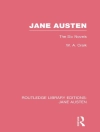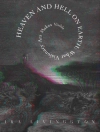
Essays examining Arthurian and Chronicle texts, contexts, and reception, in honour of Fiona Tolhurst’s contributions to Arthurian Studies.
In her all-too-short but ground-breaking academic career, Fiona Tolhurst made significant contributions to the discipline of Arthurian Studies, advancing, amongst much else, understanding of Geoffrey of Monmouth, Arthurian Women, the English Mortes, and modern Arthuriana, including cinematic versions of the legend. The essays assembled here reflect her commitment to explication of Arthurian and Chronicle texts and contexts. Several engage with Geoffrey of Monmouth, examining, among other topics, the depiction of women in his narrative of British origins; the function of giants and significance of landscape and geography in his writings; the contrast between Geoffrey’s Trojan-British empire and the Graeco-Egyptian foundation narratives of Scottish and Irish chronicles; and the reception and use of his writing from the sixteenth through nineteenth centuries. Other contributors consider characterization and politics in the Brut tradition and Malory; the puzzling dualities of the alliterative Morte; the reception of Malory’s ‘Trystram’; continuities between medieval and modern readings of the Morte Darthur; and the uses, adaptation, and appropriation of Arthurian themes and ideals in the twenty-first century.
Tabella dei contenuti
List of Illustrations
Introduction: Dorsey Armstrong and K. S. Whetter
Chapter 1: Scota
Edward Donald Kennedy
Chapter 2: Bad Girls and the Britons: Ronwein, the Feminist Villain of De gestis Britonum
Daniel Helbert
Chapter 3: Primitivism, Colonialism, and the Rhetoric of Topography: Geoffrey of Monmouth’s
Giants of Albion and Britain’s Chalk Giant Figures
Lorraine Kochanske Stock
Chapter 4: The Reception of the Legendary History of Britain
Alan Lupack
Chapter 5: What we leave behind: Legacy in Malory’s Characterisation
Raluca L. Radulescu
Chapter 6: ‘Both/And’: Engaging the alliterative Morte Arthure
Dorsey Armstrong
Chapter 7: Some Problems with the Critical Reception of Malory’s ‘Boke of Sir Trystram’:
Quondam nec Futurus
K. S. Whetter
Chapter 8: Malory in the Time of Pandemic
Kevin T. Grimm
Chapter 9: How to Handle a Woman: Aaron Sorkin’s Camelot
Susan Aronstein and Kathleen Coyne Kelly
Epilogue: Painting Lions
Amy S. Kaufman
List of Contributors
Index
Circa l’autore
Dr Raluca Radulescu is Senior Lecturer in Medieval Literature, Bangor University











